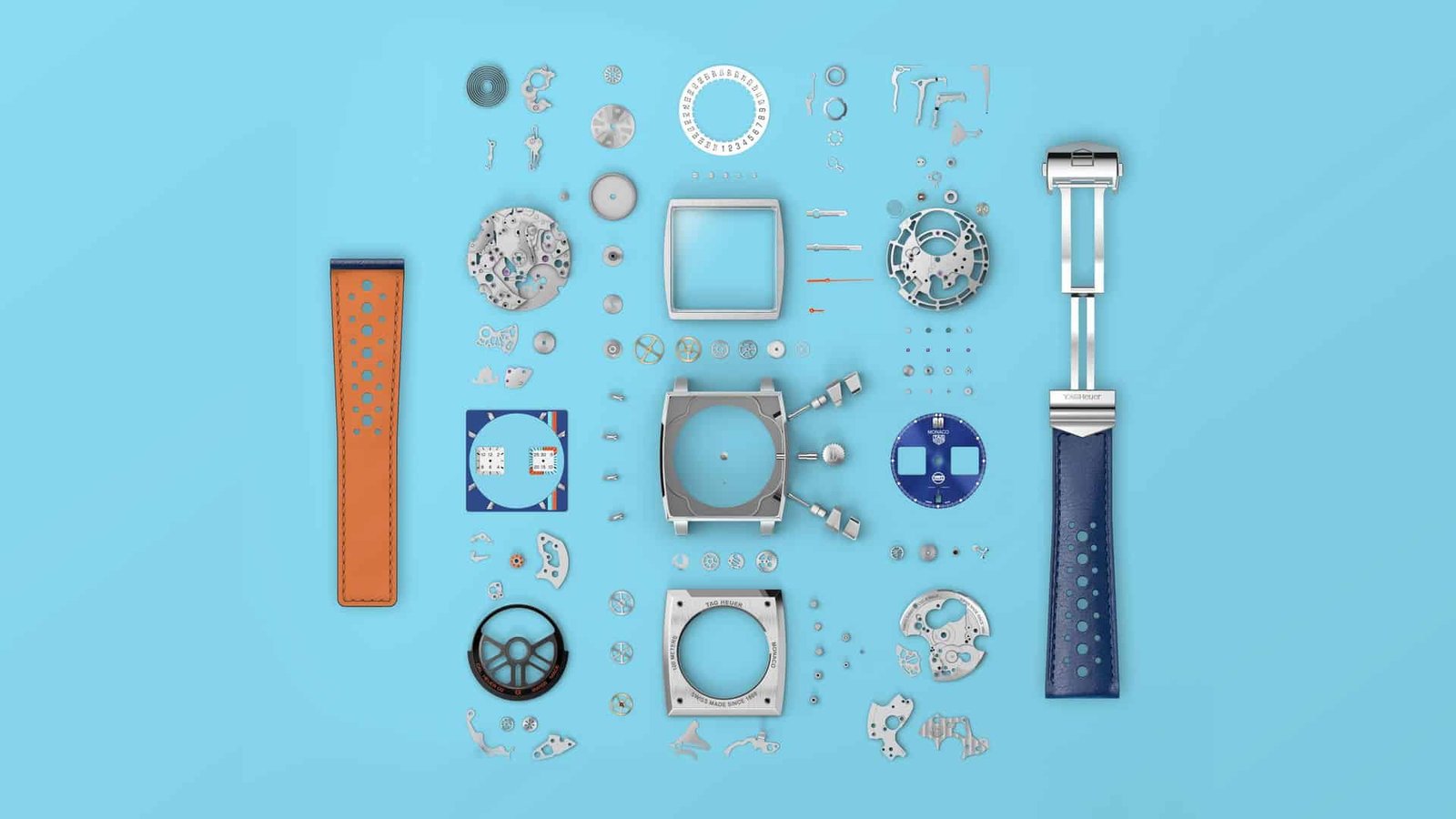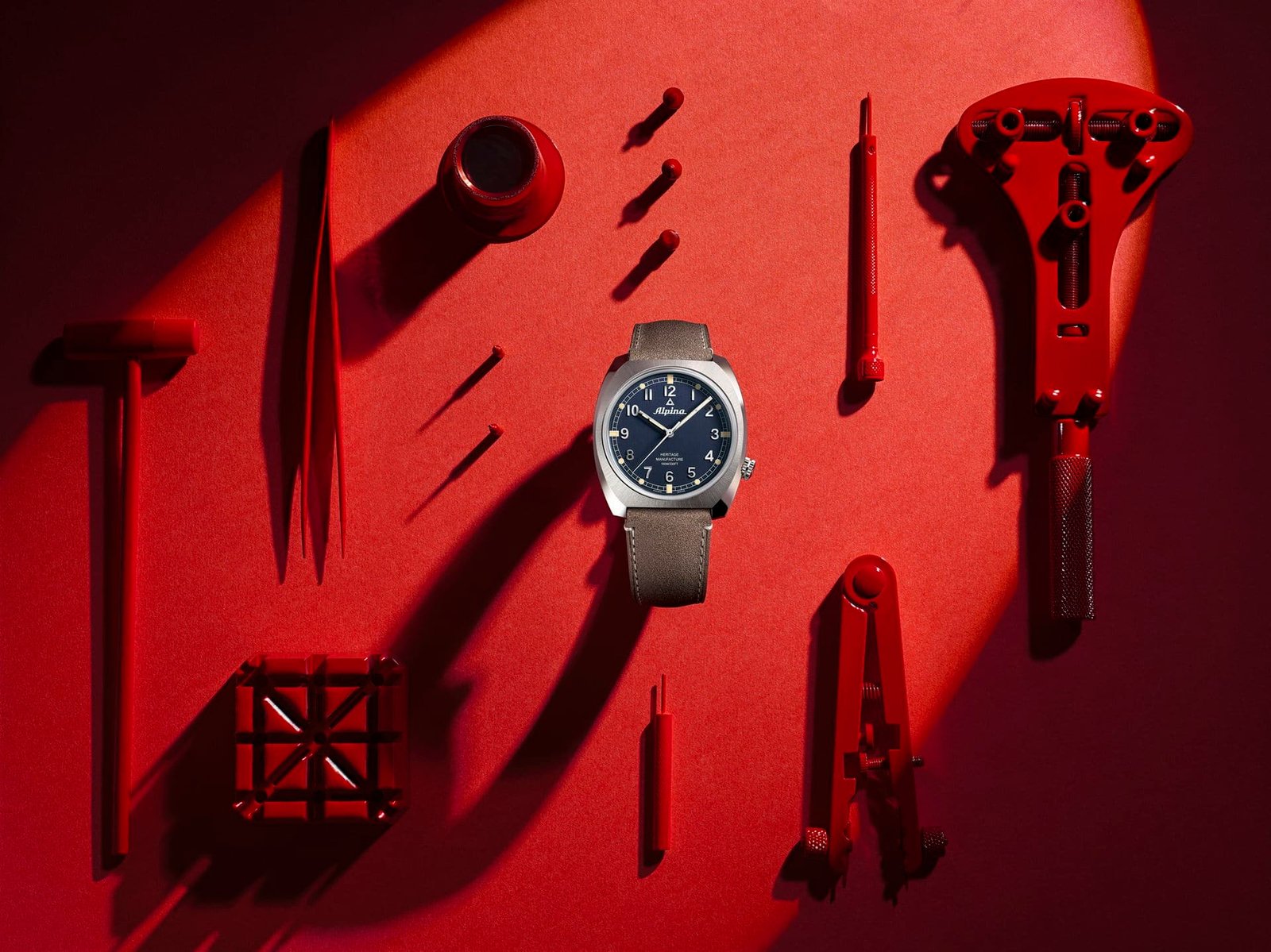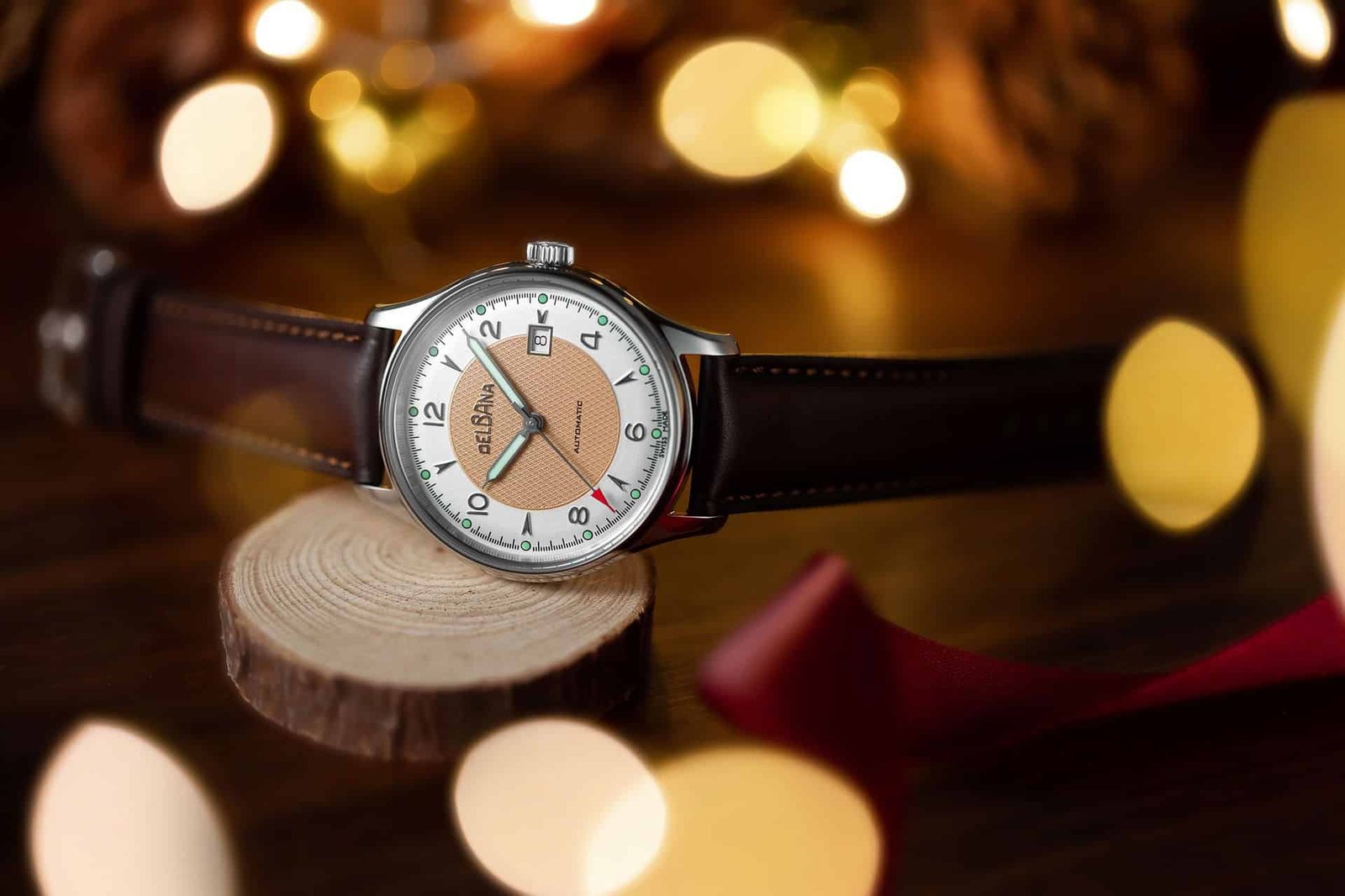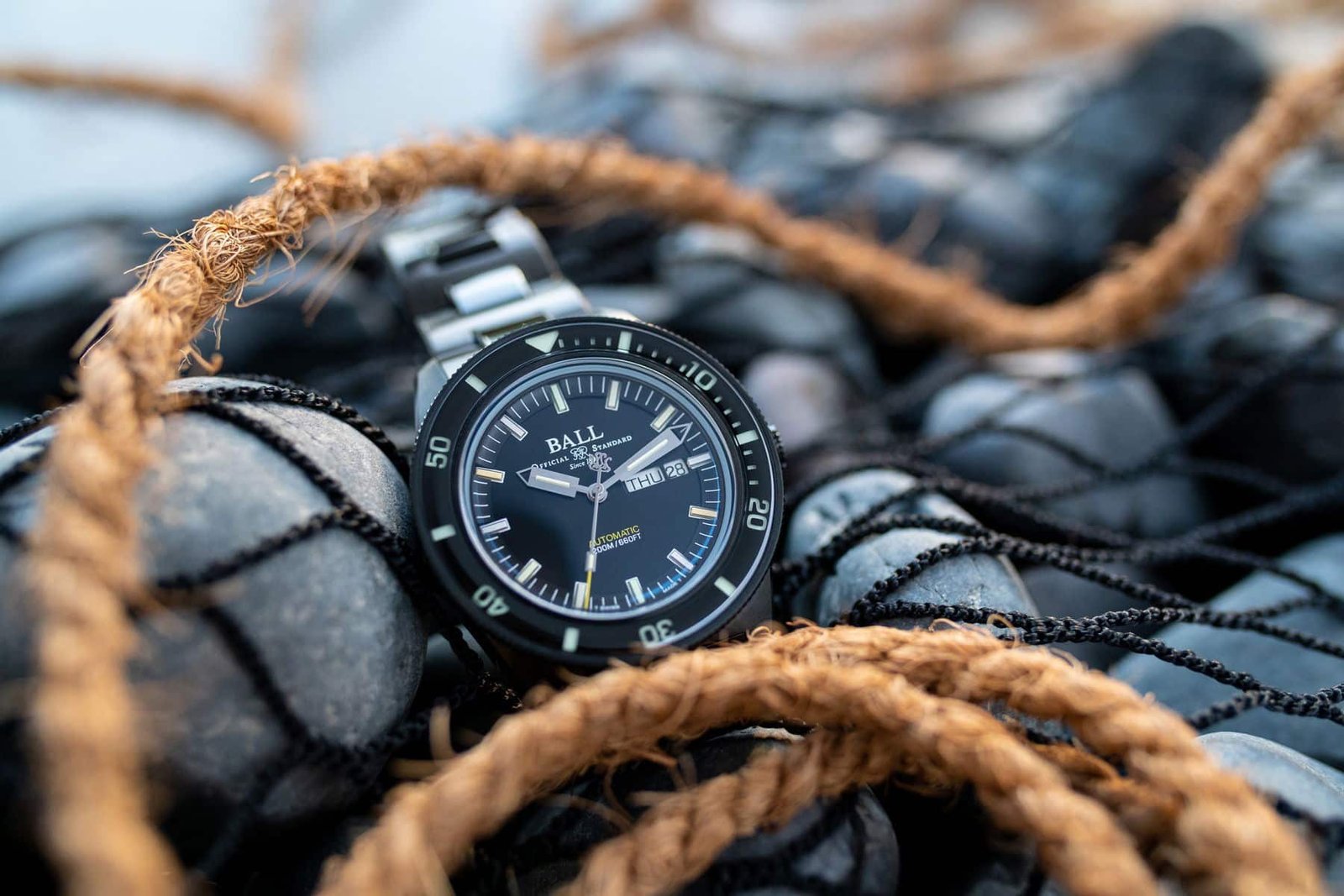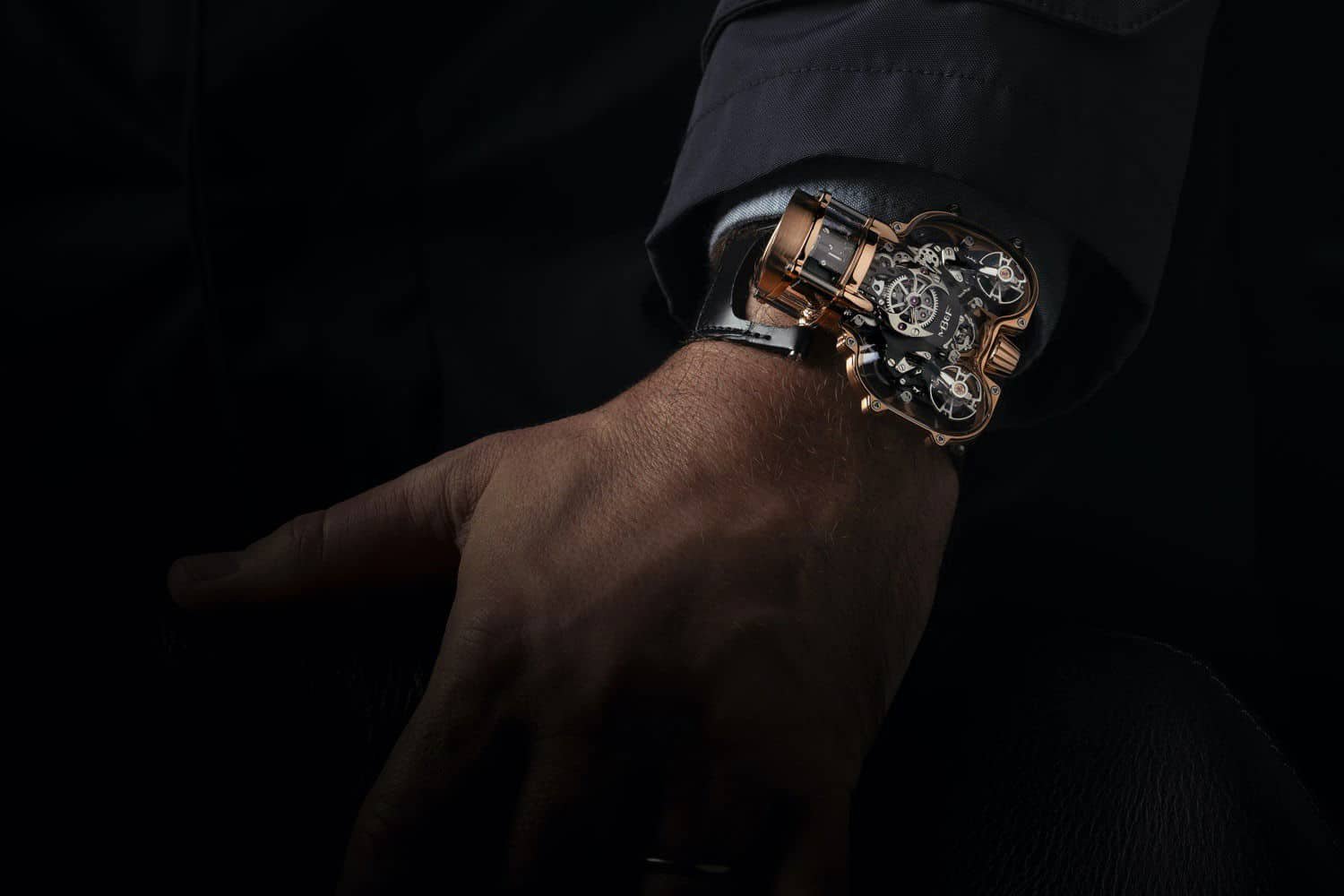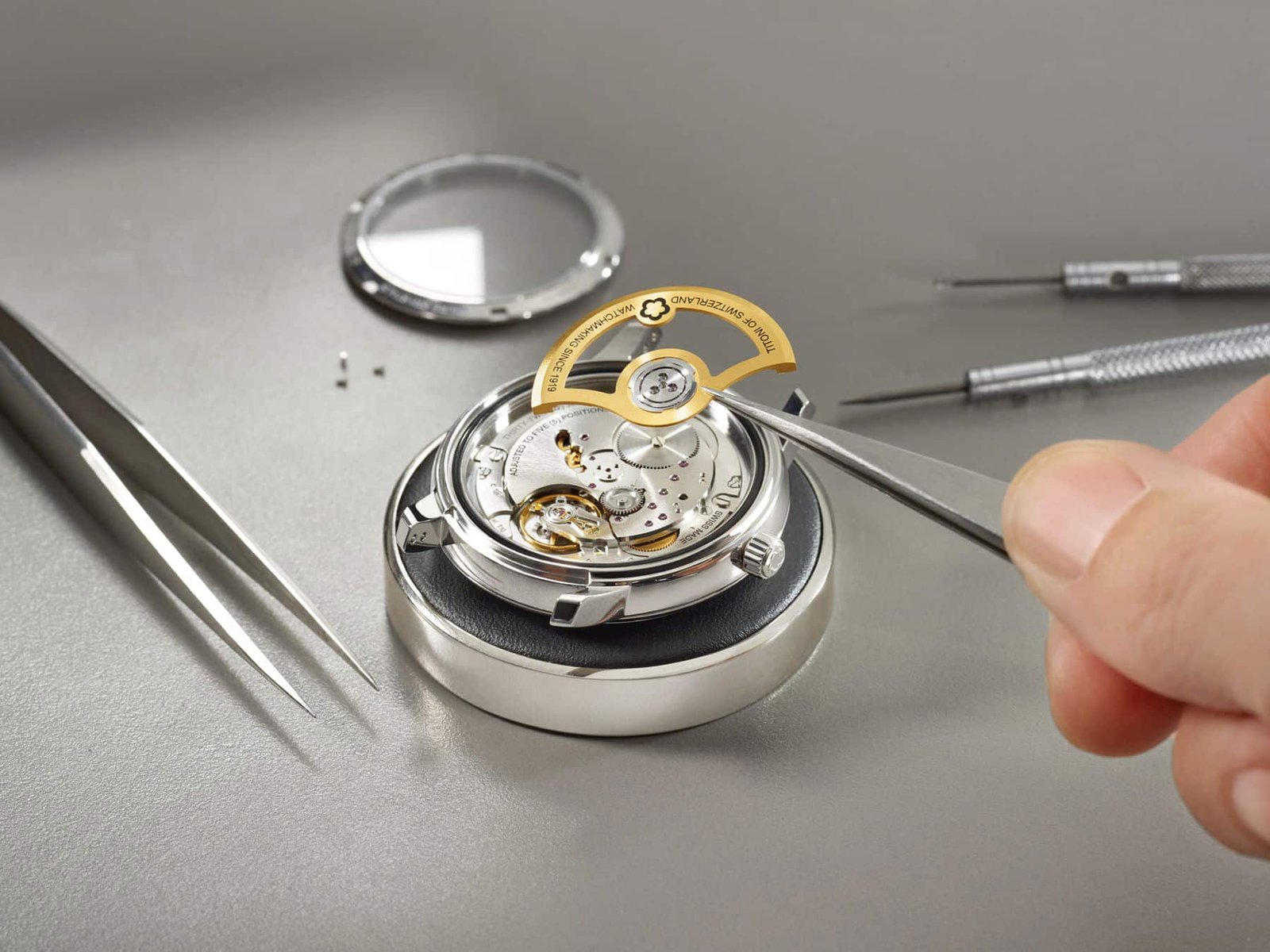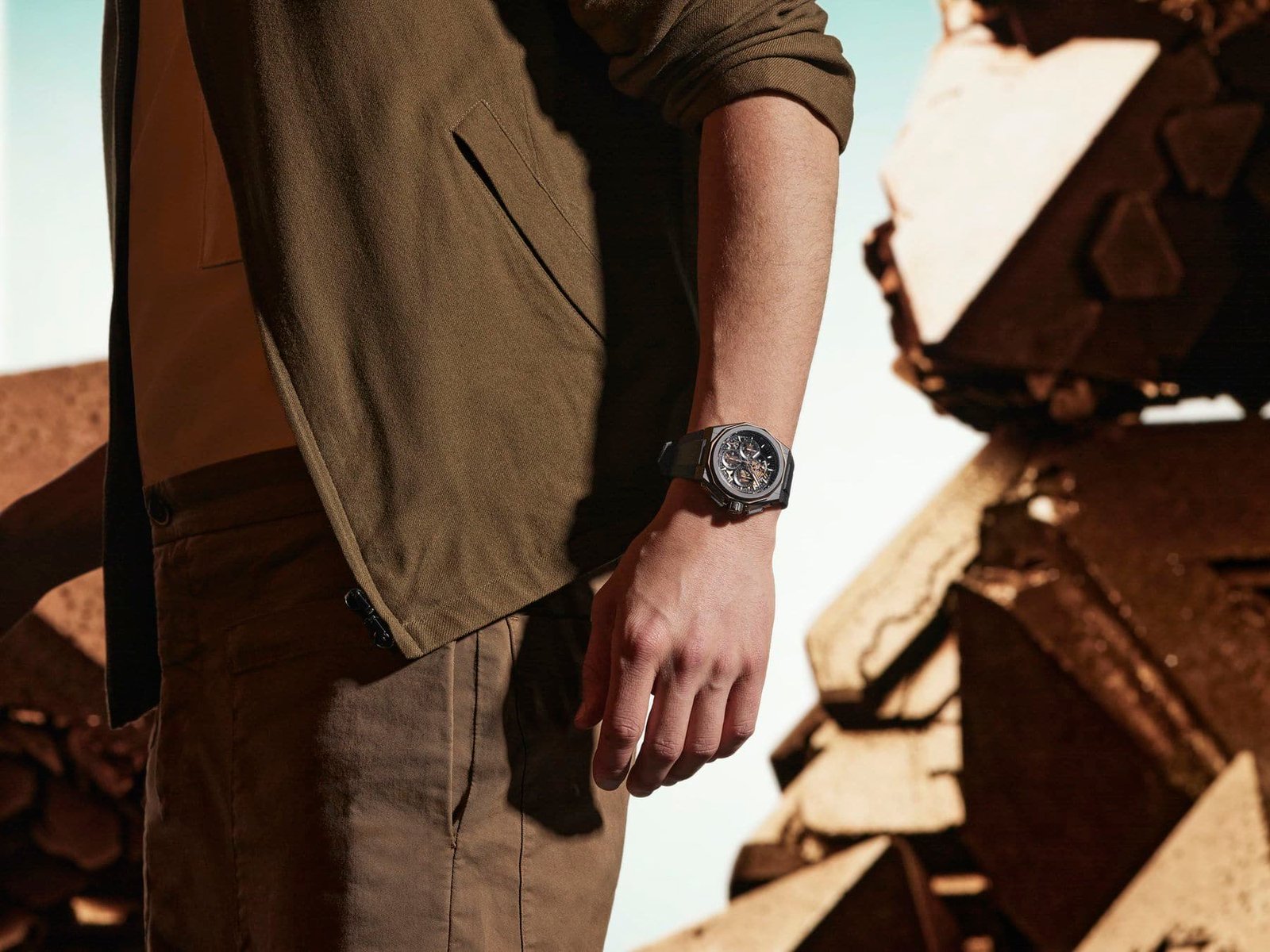Aperture
There is a window in the dial that showcases something (e.g., the date, the power reserve, the day/night indicator).
Bezel
The ring encircling the dial. In diving watches, the bezel has a scale on it so you can track how long you have been underwater.
Bracelet
The bracelet secures the watch to your wrist and is always made of metal.
Case
The box that holds the watch together, with the movement inside. The most common case shapes are:
- Cushion
- Octagonal
- Oval
- Rectangle
- Round – by far the most common
- Square
- Tonneau
Caseback
The backplate of the case that can be either open or closed. Open means that you can see the movement through the glass covering the case back also referred to as an exhibition case back. Closed refers to a solid screwed-down case back.
Crown
A piece that juts out from the side of the case, usually on the right-hand side, allowing you to wind and set the time or other complications. Watches with the crown on the left side were common for pilots in WWII allowing them to operate their chronographs whilst wearing heavy mittens, and strapped into a tight space. Some watch brands still feature the crown on the left.
Crystal
The crystal is the glass covering the face or back of a watch protecting it from dirt, water, and other elements. There are 3 major types used in watchmaking:
- Synthetic Sapphire: This transparent synthetic crystal is the second hardest material, after diamonds, and is virtually scratchproof. This is the most expensive type of crystal used in watchmaking.
- Mineral: Mineral crystals are made of glass. They are easy to scratch and the scratches cannot be buffed out. They are inexpensive compared to sapphire crystals.
- Acrylic: This is the most affordable type of crystal and also the least resistant. It is similar to plastic.
Cyclops
The cyclops is the small lens on the crystal that magnifies the date.
Deployant buckle
A folding metal buckle that holds the watch securely on the wrist.
Dial
The “face” of the watch, where the hands and other indications are displayed. The most common dials are:
- Arabic: The dial only has numeral indicator markers
- Stick: The dial has only marks and dots with no numeral indicators.
- Roman: The dial only has Roman numeral indicators
- Roman & Stick: The dial has both Roman numerals and stick indicator marks.
- Arabic & Stick: The dial has both numerals and stick indicator marks.
- California: The dial has half Roman and half Arabic numerals.
Diving Bezel
A diving bezel allows a diver to measure the time spent underwater using minute markers from 0 to 60 on a unidirectional rotating bezel. Before diving, you set the bezel according to your air tank supply.
Hands
The hands are the “arrows” that indicate the time. Most watches have at least an hour and a minute hand.
Helium Escape Valve
A helium escape valve is found on professional dive watches. It allows the extreme pressure on a deep dive to escape the watch via a valve that opens automatically when the pressure inside the watch is greater than outside.
Hour Marker
These are the indicators on the dial that mark the hours.
Indexes
Also called indices, these are raised numbers or batons attached to the dial via adhesion or pegs. They are used to indicate the hour and minute marks (e.g. five minutes, ten minutes, etc., and double as hour indicators).
Jewel
The jewels are in the movement of a mechanical watch and are small sapphires and rubies that act as bearings for the gears to reduce friction.
Lugs
These are the link between the case and the strap. There are four lugs on a watch and they are the protrusions from the case that allow the strap to be connected to the case.
Minute scale
This scale details the minutes on the dial of a watch. It is also called a railway track because it looks a little bit like one.
Movement
The movement is located in the case and is what powers your watch.
Pin buckle
A pin buckle is a traditional method of closing the strap, where the pin on one side of the strap is inserted through the holes of the other side of the strap. It is also referred to as an ardillion buckle.
Pushers
A pusher is a sort of button on the side of the case which actuates a function (the start and stop of a chronograph, the starting of a minute repeater, the change of a time zone, etc.)
Rotor
The rotor or oscillating weight is found only in automatic watches. The weight of the rotor uses gravity to turn with the movement of your watch on your wrist thereby winding your watch.
Strap
The strap secures your watch to your wrist. A strap can be in any material but metal so rubber, leather, textile, or other.
Subdial
A subdial is a small dial on the main dial used for displaying additional complications such as as small seconds or a chronograph counter.
SuperLuminova
This is a luminous material that, when charged by the sun or another light source, emits a glow that allows the time to be read.
Timing Bezel
A timing bezel is used to measure an amount of time. It is bidirectional so it can move either clockwise or counterclockwise.
